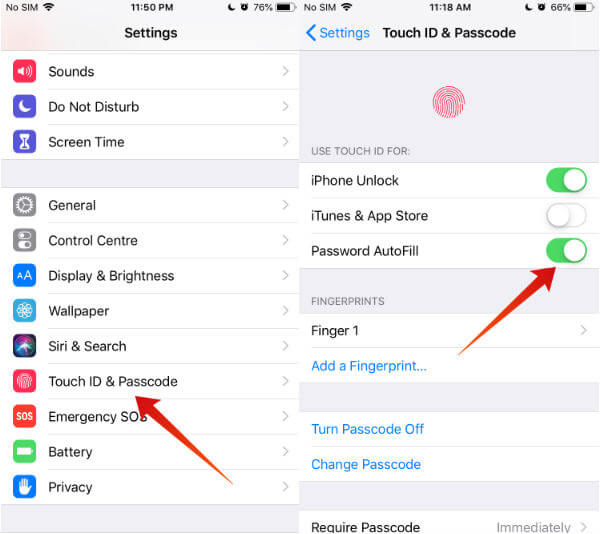
Step 7: You may have noticed a Clear History and Website Data option in the Safari settings. To do this, swipe from right to left on a website you would like to remove until the Delete button appears, and either tap that button or continue swiping to delete the data for the selected website. Step 6: Instead of removing everything, you can also choose to remove the data for only specific websites. This includes any sites where you've saved your login status, so you'll need to sign in to those again the next time you visit them.

Note that this will remove all cached data and cookies for all sites. Step 5: Select Remove All Website Data and confirm by selecting Remove Now from the pop-up that appears. The number at the top shows the total amount of space taken up by all cached sites. This will show you a list of all the sites that store cached information, cookies, and other data in Safari on your iPhone, sorted in descending order by the amount of space each one takes. Step 3: Choose Advanced at the bottom of the next screen.

#Autofill iphone how to
How to use iOS 17 FaceTime gestures (and what they look like)
#Autofill iphone upgrade
The iPhone 15 Pro’s biggest upgrade is hiding in plain sight iPhone 15: did Google finally beat Apple? Step 1: Open the Settings app on your iPhone. Even if your browser of choice is Chrome, Firefox, Edge, or something else, it's still a good idea to check the instructions below, as many third-party apps still use the underlying Safari engine when opening websites. Most iPhone owners use Safari as their primary browser, making this the place where most of your cached data is stored. Apple's built-in apps are generally better at this - they'll start discarding unnecessary data when your iPhone gets critically low on space - but third-party browsers like Chrome aren't nearly as diligent, nor are other apps that have their own caches in place.Ĭhristine Romero-Chan / Digital Trends How to clear your browser cache on an iPhone For instance, Facebook and Instagram will cache social media posts you've recently viewed, and Google Docs keeps a cache of anything you've been working on recently - even though the actual docs are saved in the cloud.Įach app does its best to manage how much data gets cached, but even so, some of them can grow pretty large over time. That's not the only way caches are used, though many third parties also cache other types of data locally for similar reasons.
#Autofill iphone download
Since we often revisit dozens of the same websites every day, browsers like Safari and Chrome store local copies of webpages and their static elements like logos and graphics, so they don't need to download them again every time you go back to the same website. The most common type of cached data lives in your web browser. This data is referred to as "cached" data, as it's information from elsewhere that's been copied to an area on your device where it can be reused for faster access. Much of this data is kept on your device to speed things up and reduce the amount of data that needs to be repeatedly downloaded over your cellular or Wi-Fi data connection. If the settings are correct and the issue continues, reach out to Apple Support directly to further assist.Andy Boxall/Digital Trends What is the cache on your iPhone?ĭuring its normal course of operation, your iPhone stores quite a bit of temporary data under the hood. If you're using the feature with apps, check out the steps here: Manage the apps that you use with Sign in with Apple Specifically, "Turn off AutoFill for passwords: Go to Settings > Passwords, unlock the screen, tap AutoFill Passwords, then turn off AutoFill Passwords."Īs well as checking Settings > Safari for current AutoFill settings. When you stop using a unique, random address, any emails sent to that address are returned to the sender.Īdditionally, we'd recommend turning off the Autofill settings with the guide page previously shared.

Click “Deactivate email address,” then follow the onscreen instructions.Select the email address you want to stop using.On, go to Account Settings, then click Manage in the Hide My Email section.To clarify the steps in the guide page Stop using, reactivate, or delete a Hide My Email address on have details on how to stop using the feature.


 0 kommentar(er)
0 kommentar(er)
